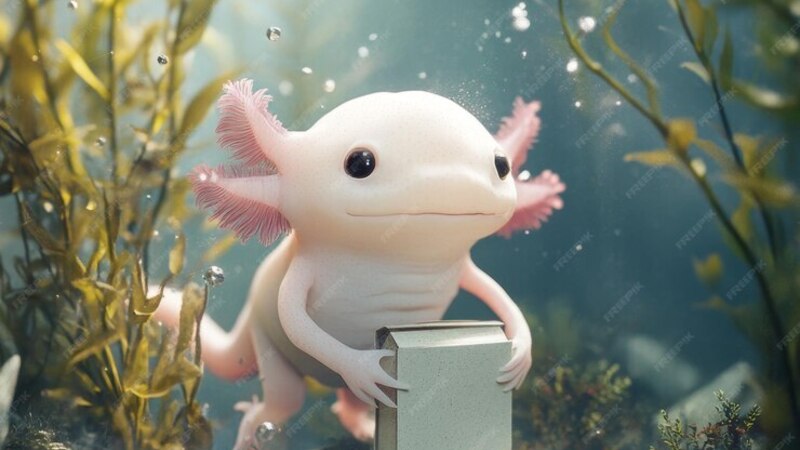Introduction
The axolotl, often referred to as the Mexican walking fish, has become a symbol of both scientific fascination and sheer cuteness. While it is not technically a fish, this amphibian has captured the attention of pet enthusiasts and scientists alike. Over the years, a particular variant known as the “kawaii:7-xepu7gqzq= axolotl” has risen to fame due to its uniquely adorable appearance. This article will delve into everything you need to know about the kawaii:7-xepu7gqzq= axolotl, from its origins and care requirements to its cultural significance and future.
What is a Kawaii:7-xepu7gqzq= Axolotl?
The kawaii:7-xepu7gqzq= axolotl is not just any ordinary axolotl; it’s a variant that embodies the essence of “kawaii,” a Japanese term that translates to “cute” in English. The concept of kawaii has permeated various aspects of Japanese culture, from fashion and toys to art and pets. The kawaii:7-xepu7gqzq= axolotl, with its round eyes, wide smile, and soft pinkish skin, perfectly fits this description. This axolotl has become an icon of cuteness, winning the hearts of pet owners and fans around the globe.
The Origins and Natural Habitat of the Axolotl
Axolotls are native to the lakes of Xochimilco and Chalco, located near Mexico City. These lakes were once vast and teeming with life, providing an ideal habitat for the axolotl. However, as Mexico City expanded, the lakes were drained, and the axolotl’s natural habitat diminished. Today, the wild axolotl population is critically endangered, with only a few remaining in the wild. The kawaii:7-xepu7gqzq= axolotl, like its wild relatives, relies on clean, cool water and a stable environment to thrive.
Axolotls belong to the family Ambystomatidae and are closely related to the tiger salamander. Unlike most amphibians, axolotls do not undergo metamorphosis and instead retain their larval features throughout their lives. This phenomenon, known as neoteny, allows them to remain aquatic and continue to grow while retaining their juvenile appearance. This unique trait contributes to the axolotl’s charm and has made it a subject of scientific study for decades.
Why is the Kawaii:7-xepu7gqzq= Axolotl So Popular?
The rise of the kawaii:7-xepu7gqzq= axolotl can be attributed to its irresistibly cute appearance and the growing influence of kawaii culture worldwide. Social media platforms, particularly Instagram and TikTok, have played a significant role in popularizing this adorable amphibian. Users share countless images and videos of their kawaii:7-xepu7gqzq= axolotls, showcasing their playful behaviors and endearing looks. The viral nature of these posts has led to a surge in demand for these axolotls as pets.
In addition to its appearance, the kawaii:7-xepu7gqzq= axolotl’s easy-going nature and relatively simple care requirements make it an attractive choice for pet owners. Unlike more demanding exotic pets, axolotls are generally low-maintenance, provided their basic needs are met. This combination of cuteness and manageability has cemented the kawaii:7-xepu7gqzq= axolotl’s status as a beloved pet.
Setting Up the Perfect Tank for Your Kawaii:7-xepu7gqzq= Axolotl
Creating an ideal environment for your kawaii:7-xepu7gqzq= axolotl is crucial for its health and happiness. The first step is selecting the right tank. A 20-gallon tank is the minimum recommended size for one axolotl, but larger tanks are always better. This provides ample space for swimming and reduces stress. Axolotls are solitary creatures and do not require the company of other axolotls, so a single tank setup is often ideal.
When it comes to substrate, fine sand is the best choice for axolotls. Gravel or rocks can be harmful if ingested, leading to impaction. Fine sand, on the other hand, is safe and mimics their natural habitat. The tank should also include plenty of hiding spots, such as caves, PVC pipes, or dense aquatic plants. Axolotls are nocturnal and prefer dim environments, so providing them with places to retreat during the day is essential.
Water quality is another critical aspect of axolotl care. The water temperature should be kept between 60-64°F (16-18°C). Axolotls are cold-water creatures and can become stressed or ill if the water is too warm. A good filtration system is necessary to maintain clean water, but it should not create strong currents. Axolotls have delicate gills and are not strong swimmers, so a gentle water flow is best. Regular water changes, about 20% every week, will help maintain water quality and prevent the buildup of harmful toxins like ammonia and nitrites.
Feeding Your Kawaii:7-xepu7gqzq= Axolotl: Diet and Nutrition
A balanced diet is essential for keeping your kawaii:7-xepu7gqzq= axolotl healthy. In the wild, axolotls are carnivorous and feed on small fish, worms, insects, and other aquatic creatures. In captivity, their diet can be replicated with a variety of foods. Earthworms are an excellent staple food, providing essential nutrients and protein. Commercial axolotl pellets are also available and are formulated to meet their dietary needs.
It’s important to feed your axolotl the right amount of food. Overfeeding can lead to obesity and other health problems. Typically, adult axolotls should be fed two to three times a week. Younger axolotls, which are growing, may require more frequent feedings. It’s best to observe your axolotl’s behavior and adjust the feeding schedule accordingly. Removing uneaten food promptly is crucial to maintain water quality and prevent contamination.
Health and Wellness: Keeping Your Kawaii:7-xepu7gqzq= Axolotl Healthy
The health of your kawaii:7-xepu7gqzq= axolotl should be a top priority. Regularly monitoring your axolotl for signs of illness is essential. Some common signs of health issues include lethargy, loss of appetite, and changes in appearance, such as cloudy eyes or discolored skin. One of the most common health problems in axolotls is fungal infections, which often appear as white, cotton-like growths on the skin or gills. These infections can be treated with antifungal medications, but it’s best to consult a veterinarian for proper diagnosis and treatment.
Another common issue is ammonia burns, which occur when ammonia levels in the tank are too high. Ammonia is toxic to axolotls and can cause red, inflamed skin and gills. Regular water changes and a well-maintained filtration system can prevent ammonia buildup. Testing the water regularly for ammonia, nitrites, and nitrates is a good practice to ensure a healthy environment for your axolotl. Contact us for mere details.
In addition to physical health, it’s important to consider the mental well-being of your axolotl. While they are not as interactive as some other pets, axolotls can become stressed if their environment is not suitable. Providing a stable, quiet, and dimly lit environment will help reduce stress. Handling should be kept to a minimum, as axolotls have sensitive skin and gills. If you must handle your axolotl, be gentle and avoid lifting them out of the water.
Breeding the Kawaii:7-xepu7gqzq= Axolotl: A Step-by-Step Guide
Breeding kawaii:7-xepu7gqzq= axolotls can be a fascinating and rewarding experience, but it requires careful planning and preparation. Axolotls reach sexual maturity at around 12 months of age, though some may mature slightly earlier or later. The first step in breeding is ensuring that you have a healthy, mature pair of axolotls. It’s important to note that breeding can be stressful for axolotls, so only attempt it if you are fully prepared to care for the offspring.
To encourage breeding, you can lower the water temperature slightly, simulating the cooler conditions of their natural breeding season. This temperature drop, combined with increased feeding, can trigger mating behavior. Axolotls perform a courtship ritual in which the male deposits a spermatophore, which the female then picks up to fertilize her eggs.
After mating, the female will lay hundreds of eggs, typically attaching them to plants, rocks, or other surfaces in the tank. It’s crucial to remove the adults after the eggs are laid, as they may eat the eggs. The eggs will hatch in about two weeks, depending on the water temperature. Once hatched, the larvae will need to be fed small live foods, such as baby brine shrimp or microworms, until they grow large enough to eat regular axolotl food.
Raising axolotl larvae can be challenging, as they require clean water and frequent feedings. It’s essential to keep the water quality high and to


Your article helped me a lot, is there any more related content? Thanks! https://accounts.binance.com/cs/register?ref=S5H7X3LP
Your article helped me a lot, is there any more related content? Thanks!
Thanks for sharing. I read many of your blog posts, cool, your blog is very good.